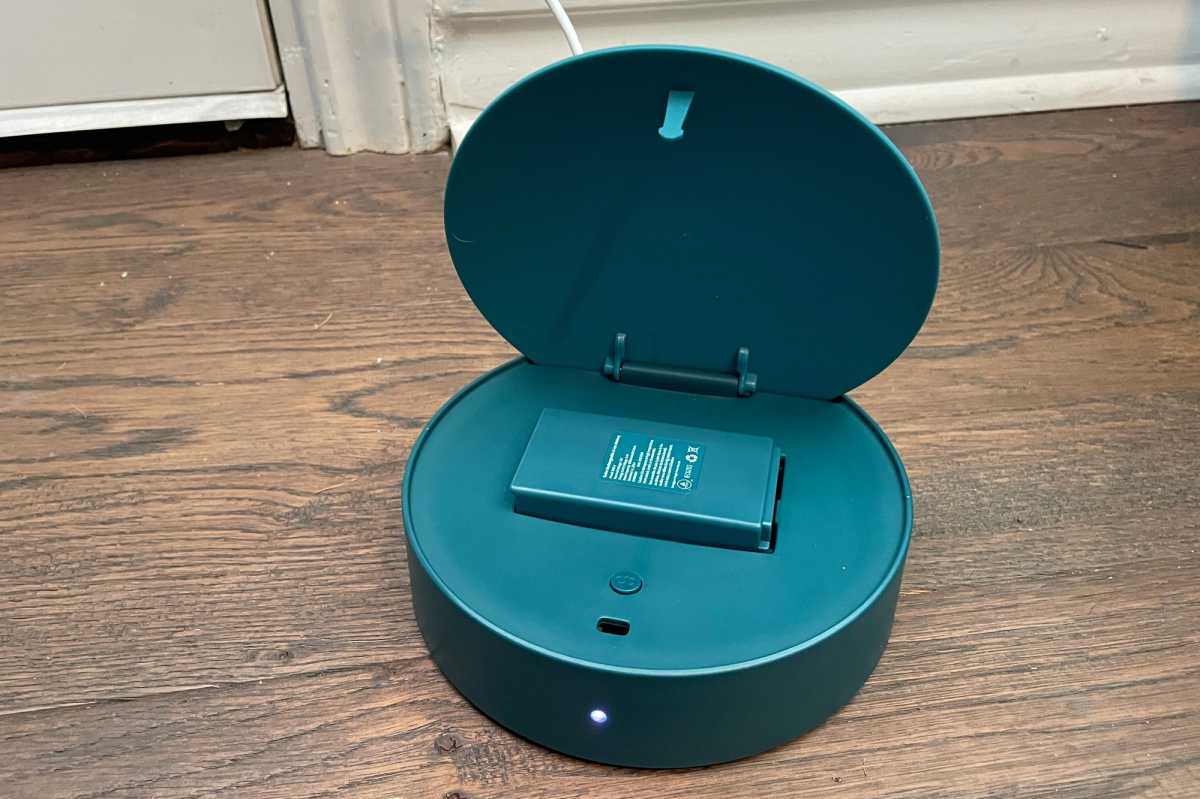Table of Contents
Expert’s Rating
Pros
- Takes frequent measurements, every 4 hours
- Uses more common and intuitive free chlorine reading
- Built like a tank
Cons
- Enormous size mars a pool’s aesthetics
- Free chlorine reading tops out too low
- Very expensive
Our Verdict
Sutro’s pool chemistry monitor is wildly expensive and has a few too many limitations for us to recommend it over less-expensive solutions.
Price When Reviewed
$499, plus a $29- or $39-per-month subscription for testing consumables
Best Prices Today: Sutro Smart Pool Monitor
$499
Owning a pool is like owning any other high-dollar product: What begins as a fun diversion soon becomes an obsession, one that demands far more oversight than you contemplated before you acquired it.
Optimizing pool chemistry is a complex task with surprisingly little guidance available for novices, which is why most people end up outsourcing their pool maintenance to a third party. But having the pool guy come once a week to scoop leaves and toss some chemicals in still leaves you six full days to worry about the water. Is the pool actually full of invisible germs? Is the chlorine too low or too high? If I go swimming, will I break out in a rash? The second-guessing can become all-encompassing.
Fortunately, a variety of high-tech tools are available to help you keep an eye on key chemical readings without the need to manually perform testing with test kits or strips, a few of which I’ve already reviewed here, including solutions from WaterGuru and ioPool. In this review I look at the Sutro Smart Pool Water Monitor, which is a direct competitor to both of those.
How it works

The Sutro Smart Pool Monitor’s bridge connects to your Wi-Fi network, but it also has a charging bay for a spare battery to power the testing module that floats in your pool.
Christopher Null/Foundry
Operationally, the device is closer to ioPool’s offering, as it’s a detached device that floats freely in the water and communicates with a bridge that is permanently plugged in to a power outlet closer to your router. Setup begins with this bridge, whose primary function is to provide a connection between the pool monitor and your wireless network (2.4GHz networks only). The disc-shaped device features a lid that pops up to reveal a battery charger. This is used to charge the pool monitor’s removable battery, two of which are included, so you’ll always have one fully charged and ready to go when the installed battery dies (after about two months in the water, based on my testing).
To get things configured, you connect the Sutro app to the hub, then pair the hub to the monitor by pressing a small button on each unit when instructed. This process failed for me the first couple of times I tried it, but eventually I was able to get the two devices properly paired with the aid of Sutro’s tech support.
The top of the pool monitor unit unscrews to reveal sockets for both the battery and a consumables cartridge (a rubber gasket prevents water from getting inside). The cartridge works much like the WaterGuru device, offering about a month’s worth of testing before it needs to be replaced. Without a cartridge, Sutro can’t really do anything. Both cartridge and battery snap in place easily, after which the unit is ready to be sealed up and dropped into the pool. The first 48 hours of use, Sutro says, won’t result in reliable readings, as the unit must first calibrate (an automatic process, unlike ioPool’s). Sure enough, by day three, I was receiving regular reports of my pool’s water chemistry.

The top of the Sutro Smart Pool Monitor unscrews to expose a bay that houses a testing cartridge and a rechargeable battery.
Christopher Null/Foundry
How does it compare to the competition?
The Sutro Smart Pool Monitor reports the two major pool chemistry readings—pH and free chlorine—while also measuring water temperature. While the ioPool measures the more esoteric “disinfection potential,” Sutro, like WaterGuru, provides a more traditional measurement of free chlorine. That’s good news, because most pool owners have a natural understanding of what free chlorine means, but it does mean that the testing can’t be done electronically like ioPool does it. And that means Sutro’s method requires more consumables.
Sutro one-ups WaterGuru, however, with an every-4-hours regimen of testing; WaterGuru checks conditions only once a day. As such, Sutro’s strategy provides a much more granular view of pool conditions, and while it doesn’t quite compare to ioPool’s every-15-minutes testing schedule, Sutro’s reporting has been plenty frequent for my needs.
As for accuracy, Sutro’s pH readings tend to run just a bit high compared to analog measurements, but like both ioPool and WaterGuru, they’re good enough for backyard use. As with other pool monitoring solutions, Sutro provides clear instructions on how you can correct your pool chemistry. A settings menu lets you specify what type and concentration of chemicals you use, so you get personalized advice based on the size of your pool and your additives of choice. (Sutro does not sell chemicals.)
Pluses and minuses

Sutro’s mobile app tracks the sensor’s every-4-hour readings, but its vague Free Chlorine reading of “5+” leaves you in the dark until the level drops back down to 5 or less (you won’t want to swim in a pool with a Free Chlorine level much higher than 5).
Christopher Null/Foundry
The Sutro Smart Pool Monitor sounds like a great product on paper—and it is in many ways—but the device has some nagging flaws that make me less likely to recommend it to people looking for a pool monitoring solution.
First, and most obviously, is its extreme size. Compared to the slender ioPool, the Sutro device is monstrous, measuring 15 inches tall and 5 inches in diameter. It bobs in the pool like a Stanley tumbler that someone left behind, to the point where it’s something of an eyesore. The battery and testing cartridge are quite small in comparison, which makes one wonder why the casing of the in-pool element is so enormous.
From a scientific standpoint, another surprising issue is that Sutro’s free chlorine reading maxes out at 5 ppm. My pool’s chlorine regularly goes higher than 5 ppm, particularly right after servicing. While it’s not generally a great idea to swim when the pool has free chlorine of more than 5 or 6 ppm, I like to monitor the level and watch as it drops back into the safe zone. WaterGuru’s FC reading tops out at 10 ppm, so you can easily estimate when free chlorine will fall into the green. Sutro’s vague reading of “5+” leaves you in the dark until it drops below 5.

The Sutro Smart Pool Monitor bridge, shown here with its lid closed. will only connect to 2.5GHz Wi-Fi networks.
Christopher Null/Foundry
Sutro’s app is also not my favorite, as functions are often unintuitive and, when you do find them, slow to load. The app keeps a history of readings—but, inexplicably, only for one week before they are overwritten. Anyone nerdy enough to test their pool chemistry every 4 hours will want to retain that data at least for several months in order to see long-term trends. Also, some settings (such as managing your subscription or pausing readings during the winter) must be configured on Sutro’s website, because those settings aren’t available in the app.
A final–and big—issue is cost: At $499, the Sutro system is by far the most expensive pool monitor I’ve tested, and that doesn’t include consumables, which cost $29 or $39 per month. The cheaper plan gets you a new cartridge every month, while $10 extra gets you access to “VIP” support and access to experts who can help troubleshoot water issues. Sutro signed me up for the basic plan, which promises that a new cartridge will be shipped out automatically when it has 35 or fewer tests remaining; but due to an apparent glitch, I never received a cartridge until the unit was nearly spent and I asked for a new one via a support email.
Should you buy the Sutro Smart Pool Monitor?
The Sutro Smart Pool Monitor will cost you a jaw-dropping $818 in your first year of operation, and while I love the frequency of its tests, the cost, size, and limitations to its free chlorine reading keep me from giving it a strong recommendation.






Leave a Reply